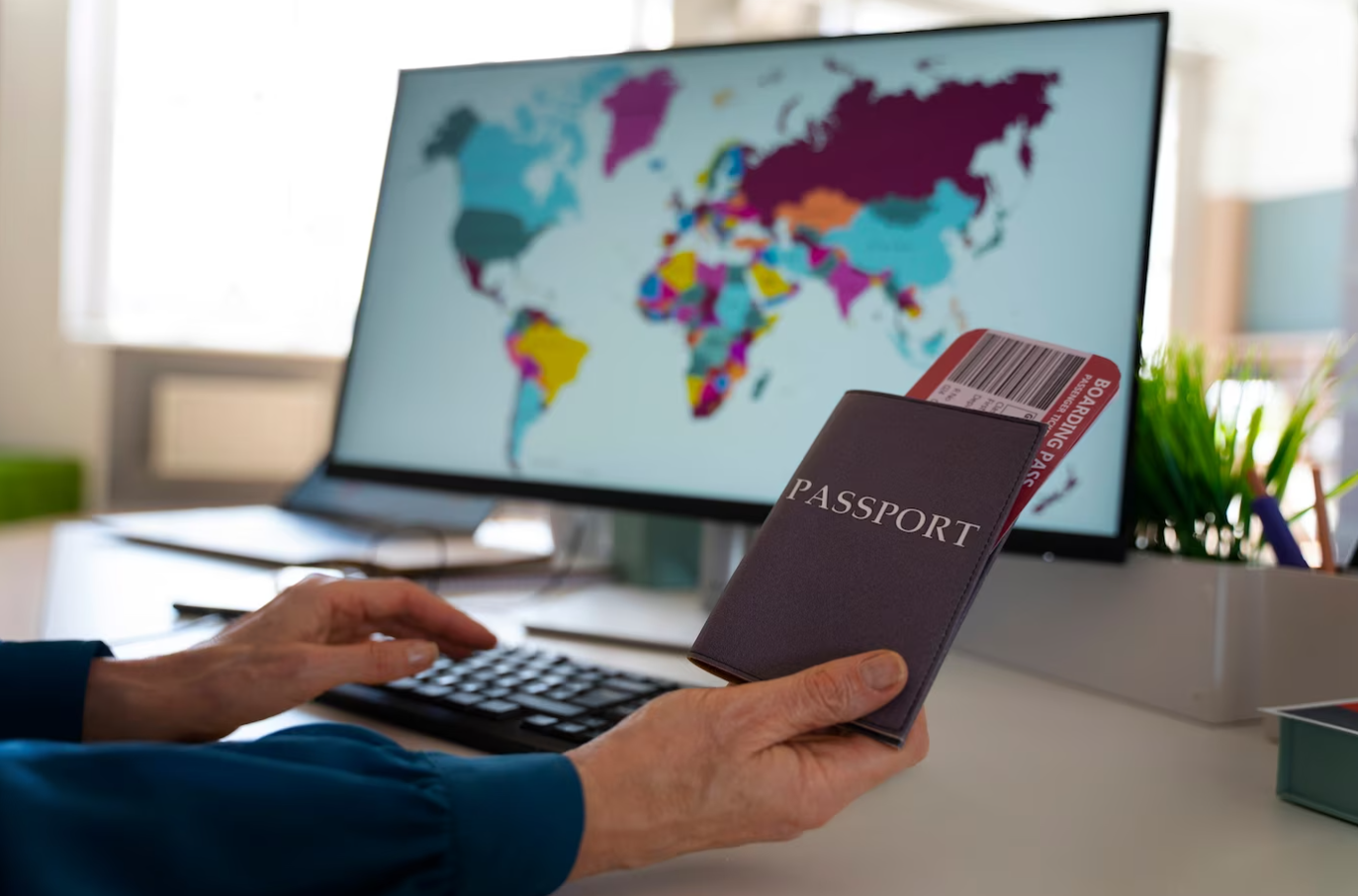Gone are the days of grainy passport photos and frantic dashes to the nearest photo studio. In today’s digital landscape, securing impeccable visa and passport photos is just a click away. Whether you’re a seasoned globetrotter or embarking on your first international adventure, navigating the online world of portrait perfection can be surprisingly straightforward. This guide will equip you with the essential knowledge and tools to confidently capture that picture-perfect image, ensuring your passport and visa applications glide through processing with ease.
Understanding the Requirements for Passport and Visa Photos
Obtaining a new passport or visa is a significant milestone in everyone’s life, and the photographs submitted in these documents play a pivotal role. Before delving into the online process of obtaining passport and visa photos, it is crucial to comprehend the specifications and requirements imposed on these images.
Different countries and governmental agencies have distinct guidelines regarding passport and visa photos. These guidelines typically cover aspects such as photo size, background color, head position, and acceptable facial expressions. It is imperative for individuals to familiarize themselves with the specific requirements outlined by the relevant government authority, usually available on their official website.
Ensuring compliance with these guidelines is paramount to avoid complications during the application process. Failure to adhere to the stipulated criteria may result in the rejection of the submitted photos, leading to delays or rejections in the issuance of passports or visas. Therefore, a thorough understanding of the photo requirements is the foundation for a successful application process.
Do-It-Yourself Photography at Home
Taking passport and visa photos at home offers a cost-effective and convenient alternative to traditional methods. However, this approach requires careful attention to detail to ensure that the resulting images meet the stringent requirements set by government authorities. Here’s a detailed exploration of the DIY process:
- Camera Selection: Begin by choosing a camera with a high resolution to capture clear and detailed images. A smartphone with a quality camera can often suffice for this purpose.
- Proper Lighting: Adequate lighting is crucial for a successful DIY photo. Natural light is preferred, so position yourself facing a source of soft, even light. Avoid harsh shadows and ensure that your face is well-illuminated.
- Background: Select a neutral background that complies with the specified requirements. Typically, a plain white or off-white background is recommended. Ensure that the background is free of any patterns or textures.
- Pose and Expression: Follow the guidelines for head positioning and facial expression provided by the relevant authorities. Maintain a neutral expression, with your face fully visible and centered in the frame.
- Multiple Shots: Take several shots to increase the likelihood of obtaining a perfect photo. Review the images to ensure that they meet all criteria before selecting the final photo for submission.
By carefully following these steps, individuals can capture suitable passport and visa photos at home, eliminating the need for a professional photographer. This DIY approach empowers individuals to control the process and achieve results that align with the specified requirements.
Utilizing Online Tools for Passport and Visa Photos
In the digital age, online tools have emerged as convenient solutions for obtaining passport and visa photos. These platforms leverage advanced algorithms to automatically adjust images, ensuring compliance with specific requirements. Here’s an in-depth look at the process, along with the advantages and considerations:
- Online Platforms: Several online platforms, such as PassportPhotoOnline.com and ePassportPhoto.com, specialize in passport and visa photos. These platforms typically offer user-friendly interfaces, allowing individuals to upload their photos directly to the website.
- Automated Adjustment: Upon uploading the image, these platforms use automated algorithms to adjust the photo according to the guidelines set by relevant authorities. This includes resizing the photo, adjusting the background color, and ensuring proper head positioning.
- Downloadable Files: Once the adjustments are made, users can download the processed image files. These files are formatted to meet the specific requirements for passport and visa photos. Users can then choose to print the photos at home or submit them digitally as part of their application.
| Features | PassportPhotoOnline.com | ePassportPhoto.com |
| User Interface | User-friendly and intuitive | Easy to navigate |
| Automated Adjustment | Yes | Yes |
| Downloadable Files | Available in various formats | Formats compatible with standards |
| Additional Services | Some offer photo printing services | Option to order printed photos |
| Cost | Typically low or free | May have associated costs |
Reviewing Mobile Apps for Passport and Visa Photos
In recent years, the rise of mobile applications has provided a convenient and user-friendly solution for capturing passport and visa photos directly from smartphones. These apps often guide users through the process, utilizing built-in features to ensure compliance with photo requirements. Let’s delve into the key aspects of utilizing mobile apps for passport and visa photos:
- Mobile Apps Overview: Several mobile apps, such as Passport Photo ID Studio and Passport Photo Booth, have been developed to streamline the process of capturing and formatting passport and visa photos. These apps are designed to be accessible to users with varying levels of photography expertise.
- User-Friendly Interface: One of the primary advantages of mobile apps is their intuitive and user-friendly interfaces. These apps typically provide step-by-step instructions, making it easy for users to capture photos that meet the necessary specifications.
- Automated Formatting: Mobile apps often incorporate automated features to format photos according to official guidelines. Users are guided to take a selfie, and the app adjusts the image to ensure proper head positioning, background color, and overall compliance with photo requirements.
- Customization Options: Some apps offer additional features, allowing users to customize certain elements of their photos. This may include adjusting the brightness, contrast, or cropping the image to meet specific preferences within the established guidelines.
- User Reviews and Feedback: Before selecting a mobile app, it’s advisable to review user feedback and ratings. This provides insights into the effectiveness and reliability of the app in producing photos that are accepted by official authorities.
Ensuring Security and Privacy
As individuals navigate the digital landscape for passport and visa photos, ensuring the security and privacy of personal information is paramount. The online transmission of sensitive data, coupled with the potential storage of personal images, necessitates a thoughtful approach to safeguarding privacy.
Security in online transactions, especially when dealing with personal identification documents, is a critical consideration. Users should prioritize websites and mobile apps that employ secure and encrypted connections, indicated by HTTPS in the URL. This encryption helps protect the data exchanged between the user’s device and the online service, minimizing the risk of interception by malicious actors.
Furthermore, when opting for online services or mobile apps, users must carefully review the privacy policies of these platforms. Ensure that the chosen service has clear policies regarding the handling and storage of personal information. Look for explicit statements regarding data deletion after the completion of the service to minimize the risk of unauthorized access or misuse.
While some online platforms may require payment for their services, it is crucial to use secure payment methods. Look for well-established and reputable payment gateways to safeguard financial information. Avoid sharing unnecessary personal details and be cautious of any requests for information beyond what is required for the passport or visa application process.
Maintaining the privacy of the submitted photos is equally essential. Delete any unused or unnecessary images to reduce the risk of unintended access. When using mobile apps, understand the permissions requested by the app, and grant only those necessary for its functioning.
In conclusion, as technology facilitates the convenience of obtaining passport and visa photos online, users must remain vigilant about security and privacy. By selecting reputable platforms, reviewing privacy policies, and adopting secure practices, individuals can navigate the digital landscape with confidence, ensuring the protection of their personal information throughout the passport and visa application process.

